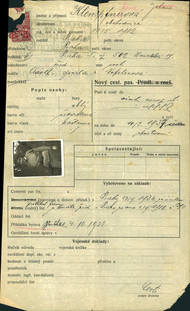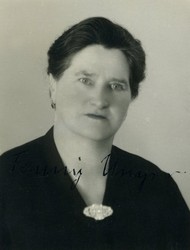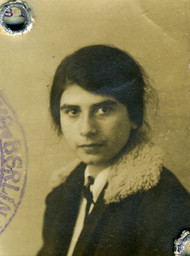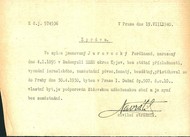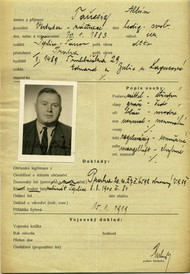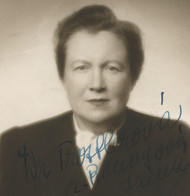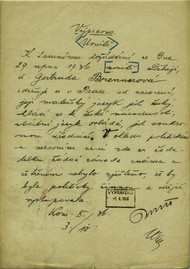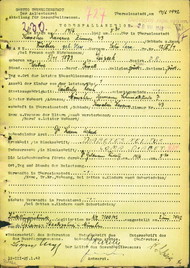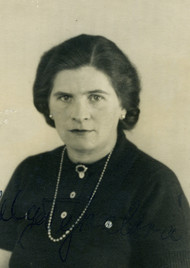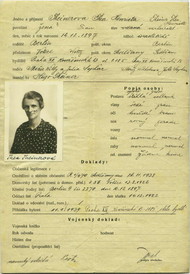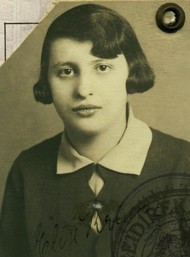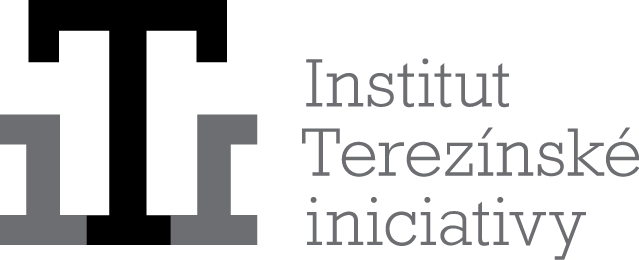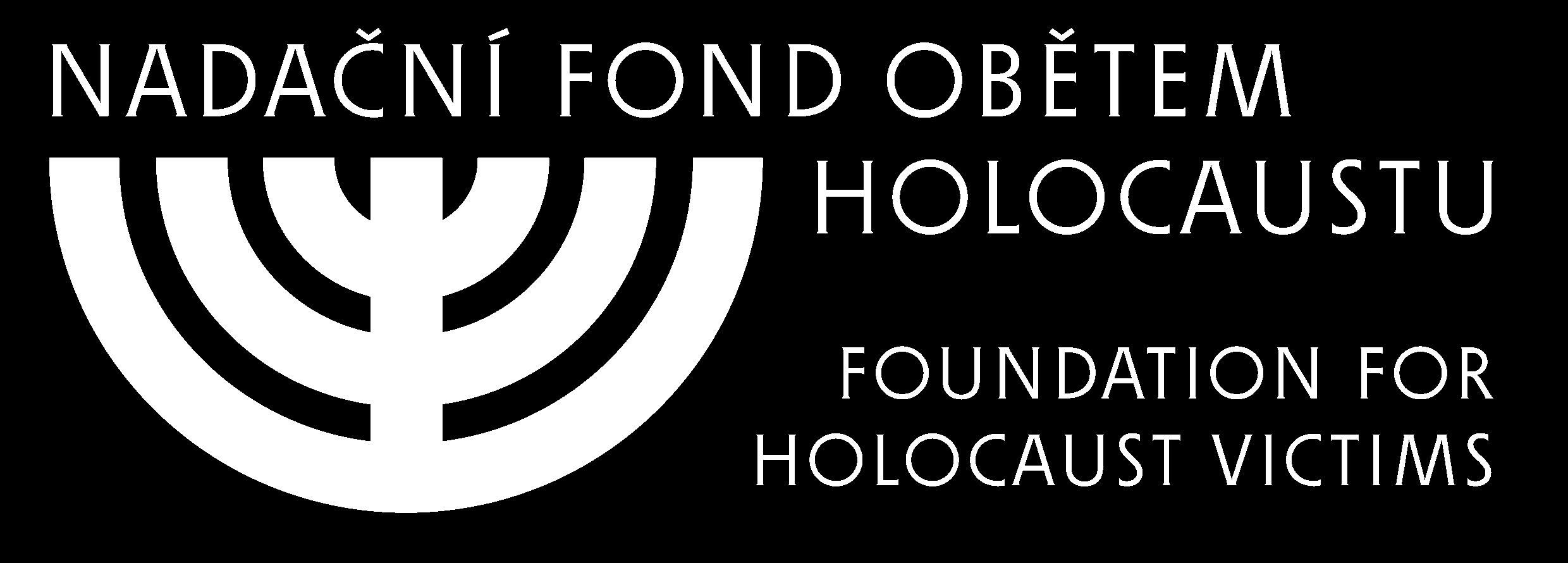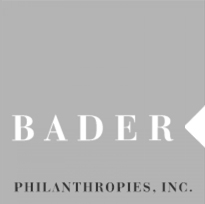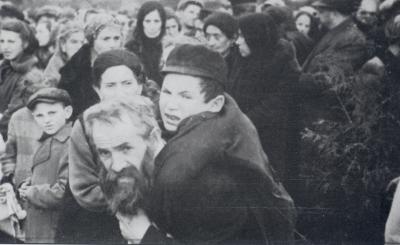
In September 1943 five thousand prisoners were deported from the Terezín ghetto to Auschwitz-Birkenau in two transports.Unlike previous transports, they received unusual privileges
: on arriving at the camp they did not undergo the usual selections, and families were also not divided up into various sections in the camp - hence the family
camp. The privileges
also included the fact that the Terezín prisoners were not subjected to the humiliating ritual of having their heads shaved on arrival, and that children were allowed to spend daytimes in a children's block. In December 1943 and May 1944, further large transports from Terezín brought a further 12,500 prisoners, who were placed in the family camp. While the first transports consisted exclusively of prisoners who had come to Terezín from the Czech lands, almost half the prisoners on later transports were Jews who had initially been deported from Germany, Austria and the Netherlands.
In the family camp, labelled section BIIb in Birkenau, the prisoners had to live in a narrow, muddy strip surrounded by an electric fence. They suffered from hunger, cold, exhaustion, illnesses and poor sanitation. The mortality rate was no lower here than in the rest of Auschwitz. The children were allowed to spend the day in the children's block, where teachers led by the charismatic Fredy Hirsch engaged them in improvised lessons and games.
The unusual privileges
given to the prisoners in the family camp were a complete mystery to the members of the Auschwitz resistance movement. After a while, however, they managed to find out that the prisoners' personal papers contained the abbreviation SB and the period six months.
SB - Sonderbehandlung,
or special treatment
- was code in Nazi jargon for execution without verdict, in Auschwitz usually death in the gas chambers.
After exactly six months, all the still-living prisoners who had been deported to Auschwitz in September 1943 were told that they would be transferred to the Heydebreck labour camp.
Instead of going to this fictitious camp, however, the lorries of prisoners headed to the Auschwitz gas chambers, where on the night of 8 March they were murdered without selection. According to several eyewitnesses, before going to their deaths in the Auschwitz gas chambers they sang, as a sign of resistance, the Czechoslovak anthem, the Jewish anthem Hatikva and the Internationale. Members of the Auschwitz resistance organisation had warned Fredy Hirsch and other prisoners in the family camp that they were shortly to be murdered, and had appealed to them to rebel - however, there was not enough time to prepare and organise armed revolt. Fredy Hirsch, who had been expected to lead the rebellion, then died of an overdose of tranquillisers - it is probable that he committed suicide.
From that point on, the remaining prisoners in the family camp lived in permanent fear that after six months they would meet the same fate. At the beginning of July 1944 these fears were confirmed: unlike in March, however, the prisoners underwent selections, and some of them were sent to work in other concentration camps. By chance, Mengele was persuaded to carry out a selection of the boys from the children's block, which meant that some of them managed to survive until liberation. Approximately 6-7,000 prisoners remained in the family camp, and were then murdered over the course of two nights, from 10 to 12 July 1944. Of the 17,500 prisoners sent to the family camp, only 1,294 survived.
It is still not altogether clear why the organisers of the final solution
created the family camp, with its unusual privileges,
only to liquidate it several months later. All that seems clear is that this remarkable activity was connected with the Nazis' attempts to hide the genocide of the Jews to the outside world, and with the visit of the International Committee of the Red Cross to Terezín, for which Terezín's SS command ordered the ghetto to be specially embellished. The Terezín SS command then showed the Red Cross delegates a Potemkin village,
which had very little in common with Terezín's cruel reality. A few days before they were murdered, the prisoners of the family camp were ordered to write post-dated postcards to their Terezín relations from the labour camp
at Birkenau. The Terezín prisoners were thus meant to gain the false idea, ahead of the Red Cross commissioner's visit, that their parents, childrens and siblings in Birkenau were all right, and above all alive. Some historians also believe that the family camp was meant to be the target of a similarly-manipulated visit by the International Committee of the Red Cross, this time to Auschwitz.
The liquidation of the family camp on 8 March and 10-12 July 1944 was the largest mass murder of Czechoslovak citizens during the Second World War.
-
See also:
-
Selected articles from the collection
The Terezín Family Camp in Auschwitz-Birkenau
. (In Czech) -
Authentic testimony by Sonderkommando member Salmen Gradowski on the family camp at Birkenau.. (In Czech)
-
Memoir of Ruth Sch., born 1917. (In Czech)
-
Literature:
-
Brod, Toman, Kárná, Margita a Kárný, Miroslav. Terezínský rodinný tábor v Osvětimi-Birkenau (The Terezín Family Camp in Auschwitz-Birkenau). Praha: Terezínská iniciativa - Melantrich, 1994. 208 s.
-
Kárný, Miroslav. Otázky nad 8. březnem 1944 (Questions surrounding 8 March 1944). Terezínské studie a dokumenty. s. 11. 39. (See notes; in Czech).
-
Ondřichová, Lucie. Příběh Fredyho Hirsche (The Story of Fredy Hirsch). Praha: Institut Terezínské iniciativy, 2001. 113 s.
-
Čapková, Kateřina. Svědectví Salmena Gradowského o rodinném táboře v Birkenau (The testimony of Salmen Gradowski regarding the family camp in Birkenau). Terezínské studie a dokumenty.


